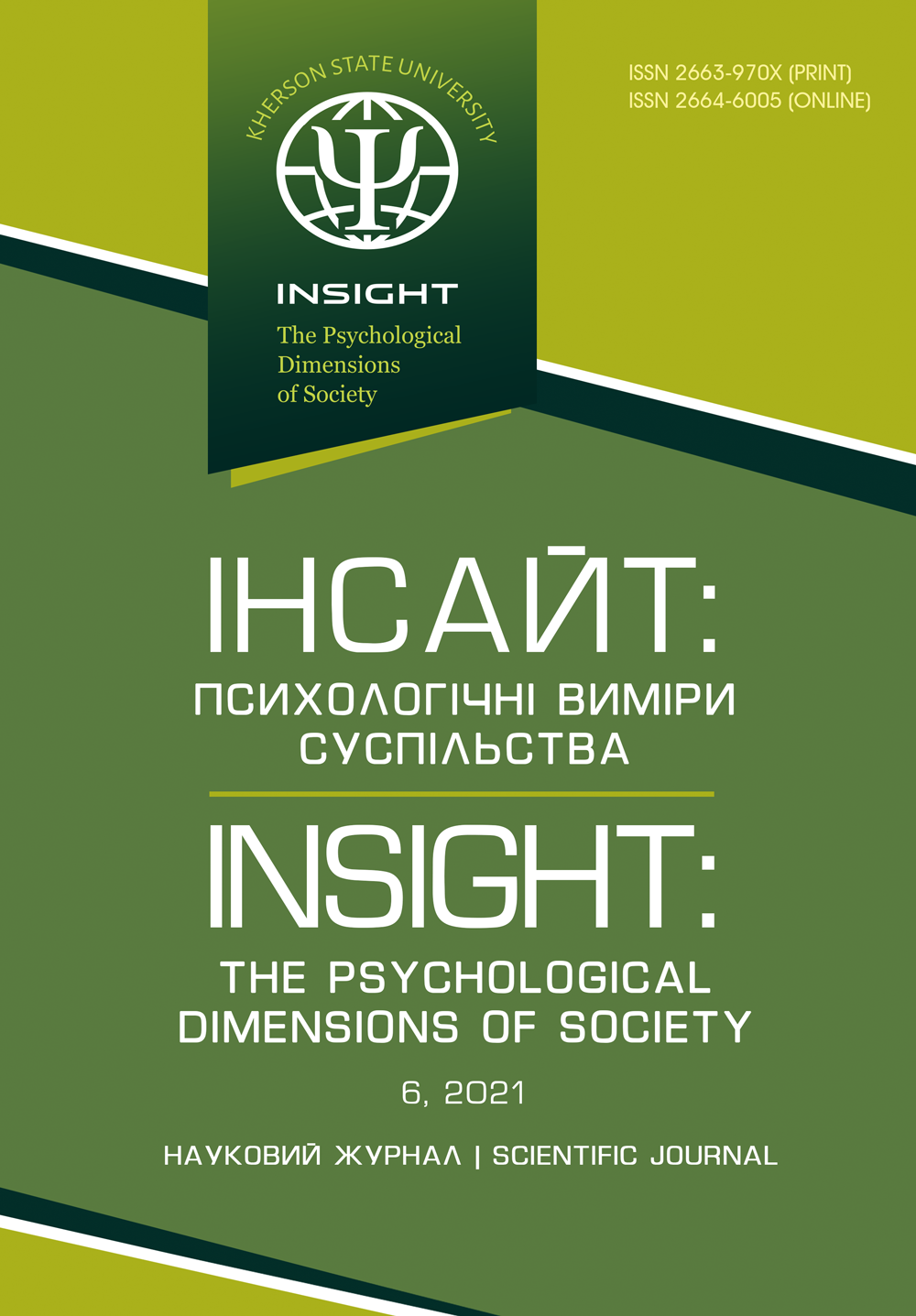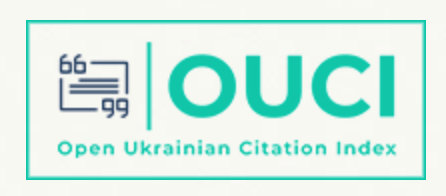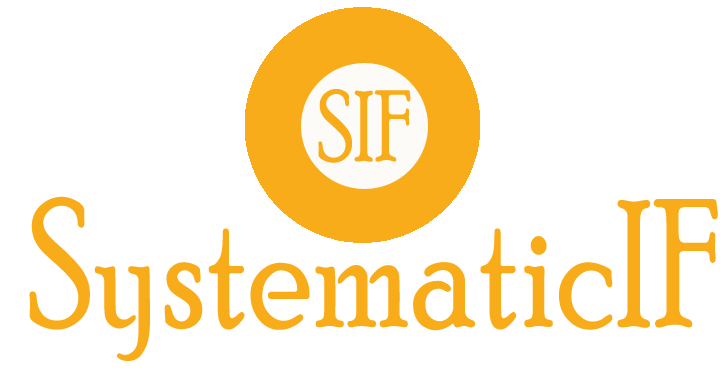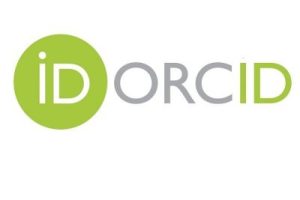Age and gender features of the correlation between the emotional evaluation of commercials and the intelligence indicators of high school and university students
Abstract
The article is devoted to the empirical study of oneof the dimensions of the problem of the relationshipbetween intelligence and emotional evaluation of personality.The aim of this article is to investigate the ageand gender characteristics of verbal, mathematical,spatial intelligence in adolescence and youths, as wellas to establish a correlation with the characteristicsof emotional evaluation of commercials by highschool and university students of different genders.The study focused on determining the age and gender characteristics of intelligence indices of high schoolstudents aged 15–17 (N = 47) and university studentsaged 19–21 (N = 49); and determining the relationshipbetween the verbal, mathematical, and spatial intelligenceof the two samples’ respondents (adolescentsand young people, boys and girls), and their emotionalevaluation of the commercials. Methods. In order tosolve research questions, two approaches are used:R. Amthauer’s “Test of the Structure of Intelligence”and C. Osgood’s semantic differential method. Results.In contrast to high school students, university studentshave a higher level of development of verbal and mathematicalintelligence. A higher level of developmentof verbal intelligence in girls and a higher level of developmentof spatial intelligence in boys were stated.Significant correlations between the emotional evaluationof commercials and gender and age characteristicsof intellectual abilities have been identified. Theindependent variable “gender” has a higher value thanthe independent variable “age”, according to the mathematicaland spatial intelligence of boys and girls intheir advertising evaluation. Music commercials withactors, a storyline, and elements of drama, as well asvideos with computer special effects, were found to bethe most entertaining to the respondents.
Downloads
References
Akimova, M. K. (1999). Intellekt kak dinamicheskiy komponent v strukture sposobnostey: avtoref.dis. na soisk. nauk. stepeni dokt. psihol. nauk [Intelligence as a dynamic component in the structure of abilities]. Avtoref. dis. na soisk. nauk. stepeni dokt. psihol. nauk: 19.00.01. – Extended abstract of Doctor’s thesis. Moscow.
Amthauer, R., Brocke, B., Liepmann, D., & Beauducel, A. (2001). Intelligenz-Struktur-Test 2000. R. Göttingen: Hogrefe. DOI: 10.1026//1617-6391.1.1.50
Brand C.R., Egan V., & Deary I.Y. (1991). General intelligence and personality: No relation? In Dc. Detterman (Ed) Current topics in human intelligence. New York.
Breit, M., Brunner, M., & Preckel, F. (2020). General intelligence and specific cognitive abilities in adolescence: Tests of age differentiation, ability differentiation, and their interaction in two large samples. Dev Psychol, 56(2), 364-384. DOI: 10.1037/dev0000876
Drozd, L. V., & Bystrova, Yu. O. (2020). Features of communication of adolescents with intellectual disabilities in the interpersonal relations. Insight: the psychological dimensions of society, 3, 123-133. DOI: 10.32999/2663-970X/2020-3-9
Di Paolo, E. A., & Thompson, E. (2014). The enactive approach. The Routledge Handbook of Embodied Cognition / L. Shapiro (ed.). London; New York: Routledge Press.
Holodnaya, M. A. (2003). Kognitivnyie stili. O prirode individualnogo uma. [Cognitive Styles. On the nature of the individual mind]. Moscow: PER SE.
Eysenck, H. L. (1996). Genius: the natural history of creativity. Cambridge: Cambridge University Press.
Ivanova, V. P. (2013). Razvitie intellekta kak osnovanie lichnostno-professionalnogo stanovleniya studentov: avtoref. dis. na soisk. nauk. stepeni dokt. psihol. nauk: 19.00.07. [The development of intelligence as the basis of the personal and professional development of students]. Avtoref. dis. na soisk. nauk. stepeni dokt. psihol. nauk: 19.00.01. – Extended abstract of Doctor’s thesis. Moscow.
Joe, Phua, Jhih-Syuan, (Elaine) Lin, & Dong Jae Lim (2018). Understanding Consumer Engagement with Celebrity-Endorsed E-Cigarette Advertising on Instagram. Computers in Human Behavior [Electronic resource]. URL: https://www.researchgate.net/publication/323311884_Understanding_Consumer_Engagement_with_Celebrity-Endorsed_ECigarette_Advertising_on_Instagram. DOI: 10.1177/1359105317693912
Kurt, F. Geisinger (2019). Empirical Considerations on Intelligence Testing and Models of Intelligence: Updates for Educational Measurement Professionals, Applied Measurement in Education, 32(3), 193-197. DOI: 10.1080/08957347.2019.1619564
Latvala, A., Kuja-Halkola, R., D’Onofrio, B. M., Larsson, H., & Lichtenstein, P. (2016). Cognitive ability and risk for substance misuse in men: genetic and environmental correlations in a longitudinal nationwide family study. Addiction, 111(10), 1814–1822. DOI: 10.1111/add.13440
Meily, R., & Meili, R. (1981). Structur der Intelligenz: Factorenanalitische und denkpsychologische Unter-suchungen. Bern.
Mollon, J., David, A. S., Zammit, S., Lewis, G., & Reichenberg, A. (2018). Course of Cognitive Development from Infancy to Early Adulthood in the Psychosis Spectrum. JAMA Psychiatry, 06510. DOI: 10.1001/ jamapsychiatry.2017.4327
Panksepp, J. (2000). The neuro-evolutionary cusp between emotions and cognitions: implications for understanding consciousness and the emergence of unified mind science. Consciousness and Emotion, 1, 23–34.
Plichtová, J. (2002). Metódy sociálnej psychológie zblízka. Kvalitatívne a kvantitatívne skúmanie sociálnych reprezentácií. Bratislava, Média.
Ponomarev, Ya. A. (1983). Fazyi tvorcheskogo protsessa. Issledovanie problem psihologii tvorchestva [Phases of the creative process. Research into the problems of the psychology of creativity]. Moskva – Moscow: Nauka.
Rubinshtejn, S. L. (1999). Osnovyi obschey psihologii [Fundamentals of General Psychology]. SPb.: Piter.
Rusalov, V. M., & Dudin, C. I. (1995). Temperament i intellekt: obschie i spetsificheskie faktoryi razvitiya [Temperament and intelligence: general and specific developmental factors]. Psihologicheskiy zhurnal. – Psychological journal, 16 (5), 12-23.
Shamne, A., Dotsevych, T., & Akimova, A. (2019). PsihosemantichnI osoblivostI spriynyattya reklamnih vIdeorolikIv [Psychosemantic Peculiarities of Promotional Videos Perception]. PSIHOLINGVISTIKA – PSYCHOLINGUISTICS, 25(1), 384-408. DOI: 10.31470/2309-1797-2019-25-1-384-408
Smul’son, M. L. (2003). Psykholohiia rozvytku intelektu [Psychology of intellect development]. Kyiv – Kyiv: Nora-Druk.
Spalova, L., & Bacikova, Z. (2017). Celebrities in social advertisement: psychosomatic perspective. Economic and Social Development: Book of Proceedings. Prague.
Sternberg, R. J. (1988). The triarchic mind: A new theory of human intelligence. New York: Viking Penguin.
Authors who publish with scientific journal agree to the following terms:
• All scientific papers may be freely copied and distributed on any medium and in any format, provided that the references to the initial data of the scientific work are indicated.
• Authors retain copyright and grant the journal right of first publication with the work simultaneously licensed Creative Commons Attribution License .
• Authors are able to enter into separate, additional contractual arrangements for the non- exclusive distribution of the journal’s published version of the work (institutional repository, your website, monograph), with an acknowledgement of its initial publication in this journal.





































